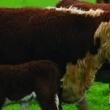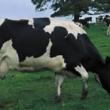Home / Disease & Conditions / Dogs / Ticks
-
Ticks are ectoparasites (external parasites), living by hematophagy on the blood of mammals, birds, and occasionallyreptiles and amphibians. Ticks are not insects like fleas, flies, and lice, but are arachnids like mites and spiders.
A tick's diet consists of blood and only blood. The tick imbeds its mouthparts into the animal's (or human's) skin and sucks blood. Except for the eggs, ticks require a blood meal to progress to each successive stage in their life cycle. Young ticks have six legs, and mature ticks have eight legs. They are about the size of a sesame seed, and males are black; females have a brick-red abdomen with a black shield-like plate close to their head.
In some countries, ticks are important vectors of a number of diseases, including Lyme disease, Tick-borne meningoencephalitis and tick paralysis. These diseases have not been reported in New Zealand.
-
Direct contact with questing ticks may result in tick parasitism. While ticks do not jump or fly, they are attracted to hosts by motion, variation in light patterns, warmth, and presence of carbon dioxide. They are often found in tall grass and shrubs where they will wait to attach to a passing host. Physical contact is the only method of transportation for ticks and some species actively stalk the host by foot.
Changes in temperature and day length are some of the factors signaling a tick to seek a host. Ticks can detect heat emitted or carbon dioxide respired from a nearby host. They will generally drop off the animal when full, but this may take several days. In some cases, ticks will live for some time on the blood of an animal.
-
Diagnosis of tick parasitism is made by examining the skin for presence of attached ticks or for tick feeding cavities left by replete ticks as they detach. Diagnosis of tick-borne diseases is made by evaluating epidemiologic considerations for each disease, history of tick parasitism, and complete clinical evaluation of ill individuals.
-
Ticks should be removed as soon as possible to limit time available for neurotoxin or pathogen transmission. The most efficient removal is accomplished with fine pointed tweezers. Grasp the tick close to the skin and gently pull free. Tweezers allow the removal of the tick without squeezing the tick body. This is important, as you do not want to crush the tick and force harmful bacteria to leave the tick and enter the animal’s bloodstream.
Species with short strong mouth parts (eg, Dermacentor) usually pull free with host skin attached; species with long, fragile mouth parts (eg, Ixodes) often leave fragments embedded in the feeding cavity. In either case, washing with soap and water is generally sufficient to prevent local inflammation or secondary infection.
Using methods such as applying petroleum jelly, a hot match, or alcohol will NOT cause the tick to 'back out.' In fact, these irritants may cause the tick to deposit more disease-carrying saliva in the wound.
Please do not use your fingers to remove or dispose of the tick. We do not want you in contact with a potentially disease-carrying tick. Do NOT squash the tick with your fingers. The contents of the tick can transmit disease.
Once an embedded tick is manually removed, it is not uncommon for a welt and skin reaction to occur. A little hydrocortisone spray will help alleviate the irritation, but it may take a week or more for healing to take place. In some cases, the tick bite may permanently scar leaving a hairless area. This skin irritation is due to the irritating and destructive tick saliva. It is not due to the tick losing its head, literally. Do not be worried about the tick head staying in; it rarely happens. This skin irritation is due to a reaction to the tick saliva.
Where numerous ticks are present, treatment with a highly effective insecticide and tickicide with insect repellent activity such as Permoxin™ is recommended. Permoxin aids in the control of pyrethroid-sensitive insects, including biting flies and ticks on dogs, horses and cattle. The unique formulation allows permethrin, a potent contact insecticide, to bind to the hair conferring a persistent insecticidal and repellent action.
-
Tick avoidance requires avoiding environments that harbour ticks. Because ticks may survive on many intermediate hosts, and because suburban living has brought pets into environments frequented by these intermediate hosts, avoidance may be difficult for all but pets kept strictly indoors or for city dwellers.
-
 Beef Cattle
Beef Cattle
Vaccines, parasite-control products and antibiotics for beef cattle. Dairy Cattle
Dairy Cattle
Vaccines, parasite-control products antibiotics and reproduction programs for dairy cattle. Sheep
Sheep
Vaccines, parasite-control products and antibiotics for sheep. Cats
Cats
Antibiotics, parasite control and disease prevention for cats. Dogs
Dogs
Antibiotics, parasite control, pain management and disease prevention for dogs. Horses
Horses
An array of health management programs for horses.

- Argentina
- Australia
- Austria
- Belgium
- Bolivia
- Brazil
- Bulgaria
- Canada
- Chile
- China
- Colombia
- Costa Rica
- Croatia
- Czech Republic
- Denmark
- Ecuador
- Egypt
- Estonia
- Ethiopia
- Finland
- France
- Germany
- Ghana
- Greece
- Hungary
- India
- Indonesia
- Ireland
- Israel
- Italy
- Japan
- Kenya
- Latvia
- Liberia
- Lithuania
- Malawi
- Malaysia
- Mauritius
- Mexico
- Morocco
- Mozambique
- Netherlands
- New Zealand
- Nigeria
- Paraguay
- Peru
- Philippines
- Poland
- Portugal
- Romania
- Russia
- Serbia
- Singapore
- Slovakia
- Slovenia
- South Africa
- South Korea
- Spain
- Switzerland
- Taiwan
- Tanzania
- Thailand
- Turkey
- Uganda
- Ukraine
- United Kingdom
- United States
- Uruguay
- Vietnam
- Zambia
- Zimbabwe
You are leaving the country website to access another site in the group.
Regulatory constraints and medical practices vary from country to country. Consequently, the information provided on the site in which you enter may not be suitable for use in your country.
